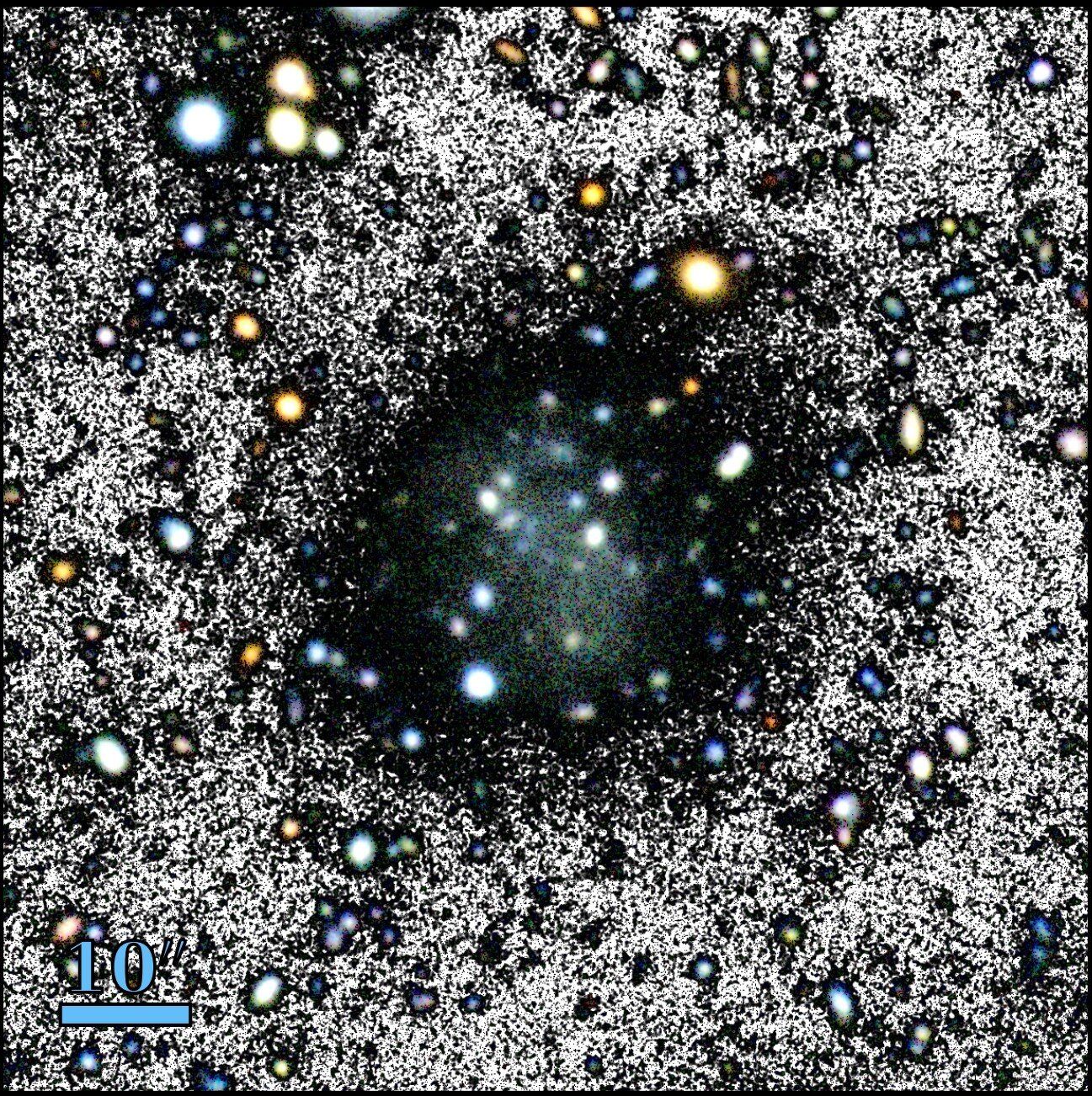
Composite image of the Nube galaxy (Credit: GTC/Mireia Montes)
Cosmic Goldilocks
This story is part of a series that will uncover the science behind the total solar eclipse that will be observed from Kingston on April 8, 2024. For more information and resources on the total solar eclipse, visit the Queen’s eclipse website.
Kingston is gearing up for its first total solar eclipse in almost 700 years. On April 8, thousands will descend upon the Limestone City to experience the moon completely eclipse the Sun, a rare astronomical event. In fact, although total solar eclipses occur about once every 18 months on Earth, any given location will have to wait centuries in between two – making each one a true once-in-a-lifetime event. But what about other planets, within and outside our Solar System? Do they also experience total solar eclipses?
“Eclipses are a cosmic coincidence,” says Kristine Spekkens (Physics, Engineering Physics, and Astronomy). “Think about why Earth experiences total solar eclipses. We happen to have a moon that happens to be far enough away from the Earth, and we happen to be so far away from the Sun that, even though the Moon is a lot smaller than the Sun, they appear to be the same size in our sky. It’s the Goldilocks of situations!”
The Sun is 400 times bigger than the Moon, but it’s also 400 times more distant from the Earth. If the Sun were a bit closer, or if the Moon were a bit further away from the Earth, appearing smaller in the sky, it wouldn’t be able to block all the Sun’s light, and the Earth wouldn’t experience total solar eclipses.
Of the Solar System’s four rocky planets, only Earth experiences total solar eclipses. While Venus and Mercury have no moons to shadow the Sun, Mars’ two moons are too small in the sky to block its full disk. Saturn, on the other hand, has dozens of moons and experiences different types of eclipses. Eclipses are also relatively common on Jupiter, which has almost one hundred known moons. However, both Saturn and Jupiter are gas planets, making it impossible to sit on their surfaces to observe an eclipse.
As for planets outside the Solar System, known as exoplanets, it’s still hard to say if they also experience eclipses in general, or total solar eclipses.
“This information isn't readily available because we're not at the point of mapping the moons of exoplanets yet,” explains Dr. Spekkens, who is cross-appointed from the Royal Military College of Canada.
“Cosmically speaking, one could argue that total solar eclipses are actually pretty rare because they imply that a bunch of coincidences have to come to pass.”
– Dr. Kristine SpekkensQueen's University, Physics, Engineering Physics, and Astronomy
Unravelling outer space secrets
An expert in star-forming galaxies, Dr. Spekkens investigates other cosmological mysteries. Her research program looks at nearby galaxies using some of the world’s most powerful telescopes, probing scientific predictions around the structure and evolution of the universe.
“I'm particularly interested in the role that hydrogen gas plays in galaxies,” Dr. Spekkens says.
Gas forms stars, and galaxies that are actively forming stars tend to have a lot of gas in them. For example, the spiral arms in the Milky Way – our galaxy – are prominent because that's where the star formation is happening. If gas was removed, stopping star formation, the galaxy would look a lot different.
Likewise, the structures of other galaxies are correlated with whether they have gas.
“My team uses deep observations of galaxies like the Milky Way and some of the faintest galaxies in the universe to understand whether or not they have gas and what that gas is telling us about the structure of the galaxy, and ultimately how they formed and evolved,” explains Dr. Spekkens.
Recently, she participated in the detection of the biggest ultra diffuse galaxy ever discovered, Nube – pronounced “nooh-bey”, the Spanish word for “cloud”— in reference to the image captured by a telescope that is part of the Sloan Digital Sky Survey.
“Nube is so faint that it's undetectable in most sky surveys. It's just not possible, with the telescopes we have today, to measure the properties of its stars from the ground,” tells Dr. Spekkens. The international research team found a gas reservoir in Nube, which helped estimate how far away from the Earth this galaxy is.
Once the team was able to estimate that Nube is about 300 million light-years away, they confirmed just how diffuse, and therefore how extreme, this object is: Nube challenges how we understand the formation and evolution of galaxies, and it challenges our current understanding of dark matter, the mysterious substance that is believed to make up 85 per cent of the universe.
Dr. Spekkens explains the standard models of dark matter can’t explain a galaxy so “fluffy”, given Nube’s diffuse distribution of starlight. The extreme cosmic object might push new ways of looking at dark matter.
“This is probably the tip of the iceberg,” says Dr. Spekkens. “There are probably many, many Nubes in the sky, we just haven't found them yet.”
Canada joins international telescopic efforts
Under the leadership of researchers like Dr. Spekkens, Canada is joining international efforts to explore the most remote corners of the universe. Canada will soon officially join the SKA Observatory, a billion-dollar radio telescope being built in Australia and South Africa by 16 partner countries around the world.
The new telescope will allow scientists to deepen our understanding of some of cosmology’s greatest questions, including how galaxies form and evolve, where magnetic fields come from, how the earliest galaxies and stars lit up the universe.
“This is one of the biggest investments that the Canadian government has ever made in astronomy,” says Dr. Spekkens, who is also Canada’s SKA Science Director. “The SKA is going to transform our understanding of the sky, enabling the next 50 years of discovery in radio astronomy.”
Note: This article originally appeared in the Queen's Gazette.

